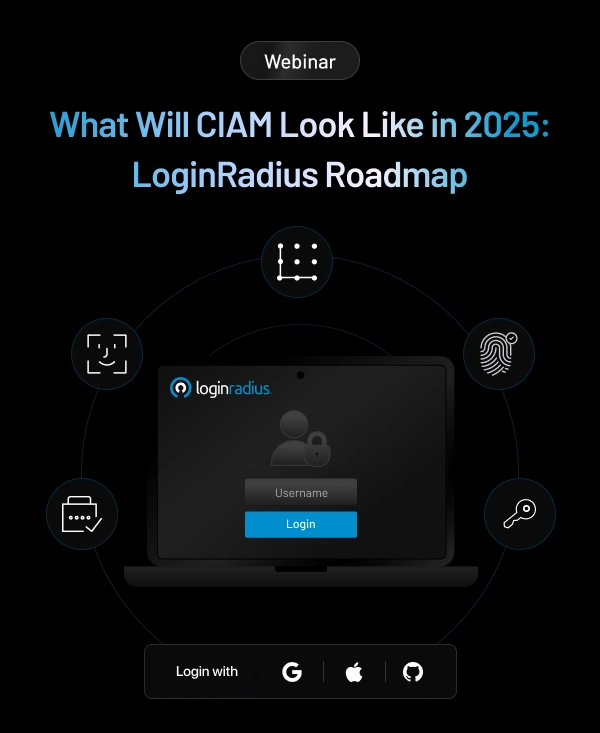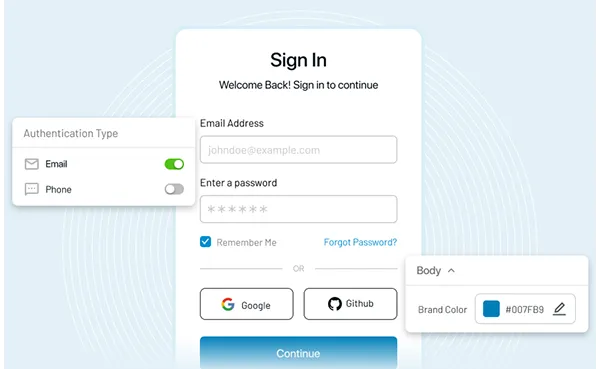Introduction
People’s lives are full of digital footprints. They leave digital traces everywhere they go, and this is why it’s so important to secure your customer's digital identity.
According to a report, 92% of small-to-medium-sized businesses deal with identity challenges, and a whopping 95% of professionals expect strong password policies from their organizations.
No wonder, identity management systems continue to evolve and aid organizations in securing their data. In this blog post, we will discuss the importance of people's in Customer IAM.
Blending Identity With Security Management
Identity management refers to the process of identifying individuals based on their roles within an organization or their relationship with third parties such as suppliers or customers. It also involves managing user access privileges based on their requirements or permissions required by their job functions within the company structure.
Identity influences different elements of an organization, and the most vital one among them is information security. So, it is fair to say that identity and security management run in the same circle.
A sound identity management system helps an organization identify its users and ensure they are who they say they are. This protects not just the organization but also its users from fraudulent attacks such as phishing and other forms of cybercrime.
By integrating these two functions into one system, organizations can benefit from improved efficiency while reducing costs associated with managing them separately (particularly when considering how much time could be wasted trying to keep track of multiple passwords for different applications).
Decoding Customer Experience in Identity Management
In the world of identity management, customer experience is a crucial factor contributing to the digital mesh that underpins businesses.
Businesses have historically associated identity management with security only. This process ensures that businesses can curb security threats by giving access to only authorized persons with the right resources. They can apply this rule not only to employees but also to customers.
However, recent research shows that customer experience plays a crucial role in ensuring a seamless and satisfying customer experience. Until recently, this system associated itself with only security.
This means that when you are making an online purchase or applying for credit, your data is not being used just for security purposes but also for creating a better customer experience. This means that your data will be used to provide you with personalized content, targeted offers and recommendations based on your behavior and preferences.
Common Challenges in Identity Management
Here are some common challenges that business owners may face when trying to manage their user's identities:
- User password fatigue: When users have to remember too many passwords, they often end up writing them down or using the same one across multiple accounts. This is bad news for both security and compliance because it means that if one account gets hacked, all of their other accounts could be compromised too.
- Compliance visibility: When you don't know who's accessing what data, it's hard to prove that you're following regulations—and even harder to show that those regulations are being followed. You need a solution that gives you full transparency into who has access to what data so you can stay compliant with regulations like GDPR and CCPA.
- Managing access for remote work: Your employees may need access to certain files while they're working remotely—but they shouldn't have access to everything! A good identity management system will let you assign permissions based on location and time of day so employees can only access what they need when they need it, no matter where they are or when they're working.
- Keeping data and other applications up to date: Keeping everything updated is a huge task for IT teams—one that can take up so much time that there's not much left over for other needs.
Effect of New Security Measures on Customer Experience
In the tech world, we've seen significant improvements in security measures that make life easier for everyone. The most common examples include passwordless authentication, biometrics, voice recognition, etc. Enterprises are also starting to see those influences on customer experience in identity management.
The biggest changes have been around security and convenience. For example, you can now use your face or fingerprint to log into your online bank account instead of having to remember a string of numbers and letters or type them in from a mobile device. There are also fewer steps involved in signing up for new accounts as companies like Facebook offer sign-up via Messenger and Twitter allows you to use your phone number as an identifier rather than creating a username and password combination (which is how most people sign up).
These improvements have made life easier for everyone involved—from users who don't have to remember multiple passwords or keep track of one too many credit cards anymore; to companies who don't have to worry about protecting sensitive information anymore because there's no need for a traditional username/password combination. These are all great improvements!
Closing the Gap between Customer Experience and Identity Management
As we are living in a digital world, customers are expecting personalized experiences. The pandemic has witnessed a massive growth in customers who rely on digital channels. It has led to the acceleration of digital identity management in many organizations. Organizations must have the best identity management to support and control customer journeys within channels. That is to provide an excellent CX in identity management.
Studies have shown that 79% of customers refuse to engage with brands if an excellent customer experience is missing. So, customer experience can make or break the reputation and profits of brands.
Businesses that strive to provide the best customer experience in identity management must follow these steps.
- Listen to the queries and issues of customers when they interact with digital channels.
- Understand the needs signaled by the customers' behavior.
- Decide the best ways to interact with customers.
- Make all decisions while making sure they provide a personalized experience.
Summing Up
Customer experience and identity management go hand in hand. So, organizations must make sure they have the best digital systems to provide a personalized experience. LoginRadius helps organizations manage user identities to deliver a unified customer experience. Overall, it provides a secure and delightful experience for the customers using the innovative customer identity platform. Reach us out if you want more information about our identity management services!

















